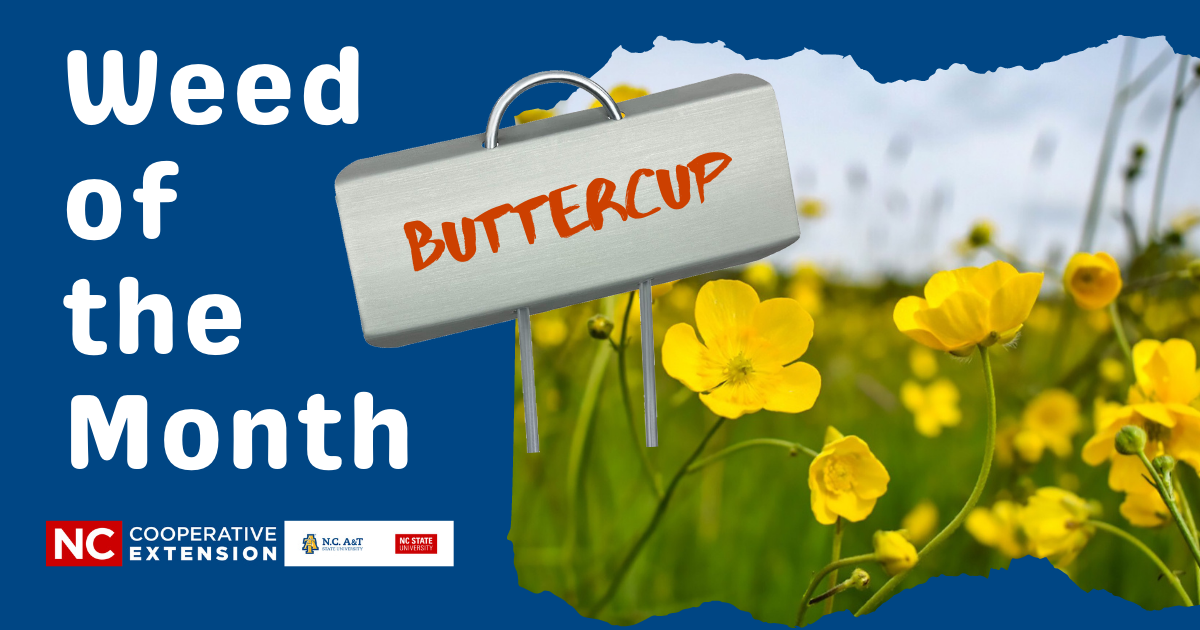Weed of the Month: Buttercup
go.ncsu.edu/readext?793356
en Español / em Português
El inglés es el idioma de control de esta página. En la medida en que haya algún conflicto entre la traducción al inglés y la traducción, el inglés prevalece.
Al hacer clic en el enlace de traducción se activa un servicio de traducción gratuito para convertir la página al español. Al igual que con cualquier traducción por Internet, la conversión no es sensible al contexto y puede que no traduzca el texto en su significado original. NC State Extension no garantiza la exactitud del texto traducido. Por favor, tenga en cuenta que algunas aplicaciones y/o servicios pueden no funcionar como se espera cuando se traducen.
Português
Inglês é o idioma de controle desta página. Na medida que haja algum conflito entre o texto original em Inglês e a tradução, o Inglês prevalece.
Ao clicar no link de tradução, um serviço gratuito de tradução será ativado para converter a página para o Português. Como em qualquer tradução pela internet, a conversão não é sensivel ao contexto e pode não ocorrer a tradução para o significado orginal. O serviço de Extensão da Carolina do Norte (NC State Extension) não garante a exatidão do texto traduzido. Por favor, observe que algumas funções ou serviços podem não funcionar como esperado após a tradução.
English
English is the controlling language of this page. To the extent there is any conflict between the English text and the translation, English controls.
Clicking on the translation link activates a free translation service to convert the page to Spanish. As with any Internet translation, the conversion is not context-sensitive and may not translate the text to its original meaning. NC State Extension does not guarantee the accuracy of the translated text. Please note that some applications and/or services may not function as expected when translated.
Collapse ▲
I’ve observed many area pastures dotted with the yellow-flowering buttercup over the past month–a sure sign of spring. Buttercup is toxic to all grazing animals, including horses, cattle and sheep. The plant contains a toxin called protanemonin, which is released when the fresh plant is chewed or otherwise wounded. Animals that eat buttercup may suffer from blistering of the mouth and lining of the gastrointestinal tract, diarrhea, colic, and, in severe cases, death. Fortunately, the unpalatability of the plant deters most animals from eating it if other desirable pasture plants are available. Buttercup toxicity is not a concern in hay since the toxin-containing plant oils evaporate quickly in drying forage.
Buttercup sprouts from seed in the fall or early winter, but is often only noticed later in the spring after the flowers bloom. Proper grazing and pasture management methods through the fall and winter that encourage desirable forage growth are preferred to help combat the emergence of this weed. If you’re currently seeing yellow flowers in your pasture, unfortunately the plant has already produced seed for the following year. Although mowing may help reduce further flower and seed production, mowing alone will not be enough to eliminate buttercup from your pasture.
Since some plants can return as perennials, and considering the toxicity potential, controlling buttercup with an appropriate herbicide (even this late in the season) may be the best option. For chemical control, herbicides registered for use on grass pastures that contain 2,4-D will effectively control buttercup. Depending on other weeds present or the emergence of new summer weeds (dog fennel, horse nettle and wing stem have all been spotted this week), other products containing multiple herbicides may be recommended. To determine the best plan for you and your pasture in Polk County, contact me at Cooperative Extension office.




